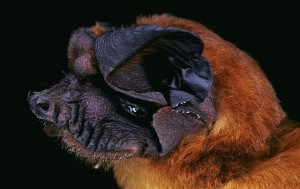With an ever-increasing human population size in Asia, the need to identify sustainable practices to ensure food security is a priority. An article published by Wanger et. al. demonstrates that a single cave-roosting bat species, Chaerephon plicatus (the Wrinkled-Lipped Bat), substantially contributes to the suppression of a major rice pest in Thailand, the white-backed planthopper. Through complex extrapolations, the authors report that the population of eight million C. plicatus could prevent an annual loss of nearly 3,000 tons of rice in Thailand alone, with a monetary value of over $1.2 million USD. Through the prevention of crop loss by white-backed planthoppers, this single bat species likely protects food for 26,000 people ever year. Furthermore, the authors advocate for the protection of common yet functionally significant species, such as C. plicatus, rather than simply focusing conservation efforts on rare or threatened species.
Wanger, T.C., K. Darras, S. Bumrungsri, T. Tscharntke, and A-M. Klein. 2014. Bat pest control contributes to food security in Thailand. Biological Conservation 171: 220-223.
Notes from Tigga: Congratulations to SEABCRU steering committee member Sara Bumrungsri on this inspiring article – the power of ecosystem service evaluations such as this can’t be underestimated. Also, we have followed another Steering Committee member, Nancy Simmons, in referring to this species as Chaerephon plicatus rather than Tadarida plicata — but its the same critter! This paper also highlights the importance of conserving caves able to support these huge aggregations.

